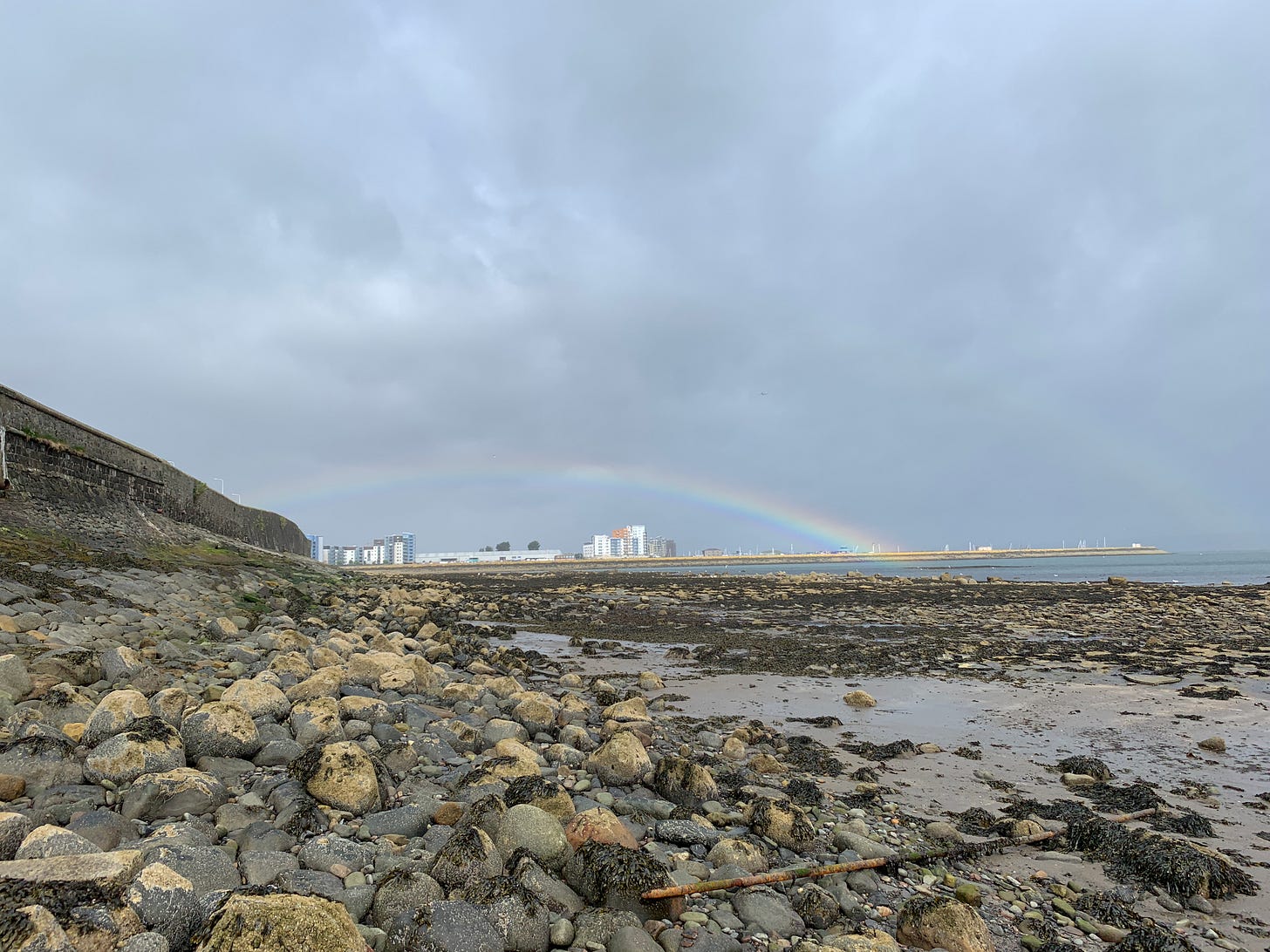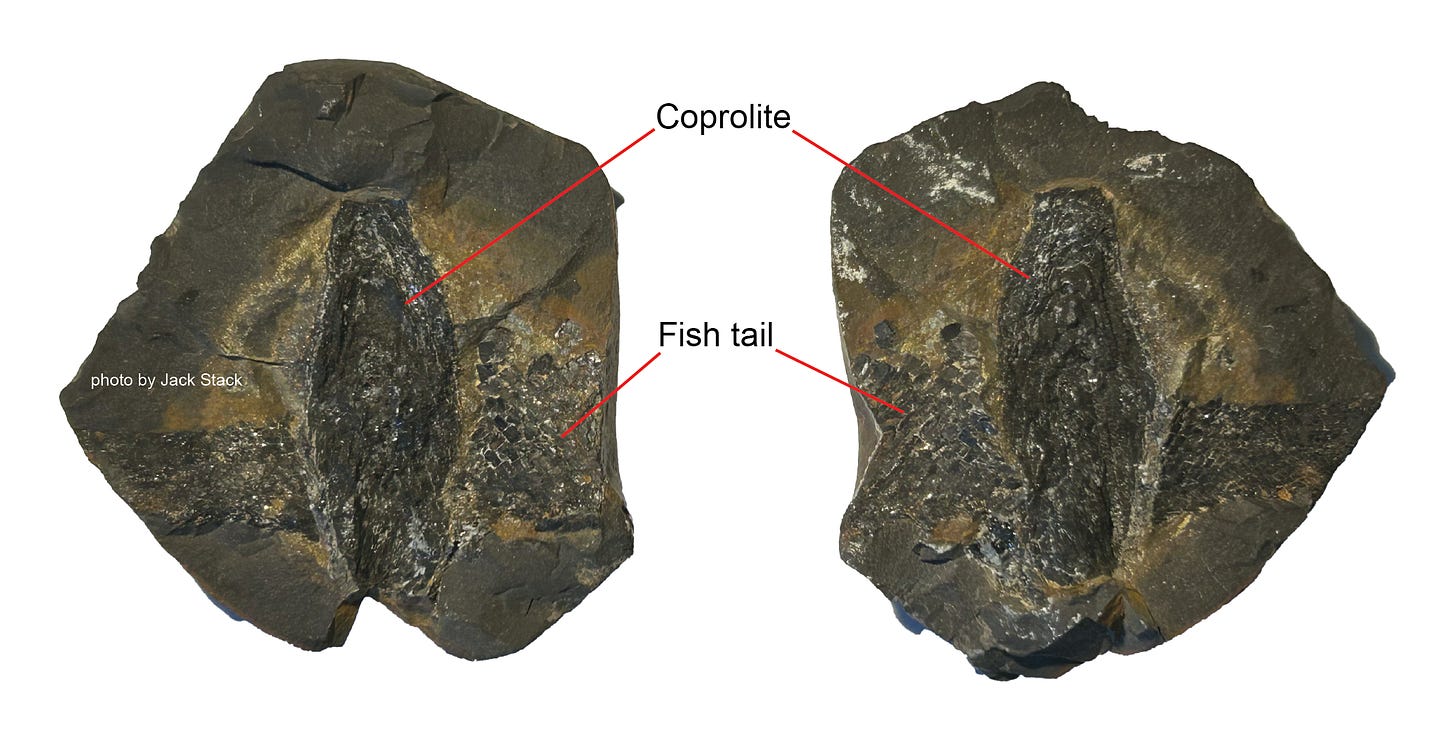Why the crappiest fossil I have ever found is my favorite
Paleontologists rarely find perfect fossils
There are a group of people who believe that dinosaurs, and indeed all extinct animals, are fake. I first came across this phenomenon when seeing a video of a former LA Rams football player, who in 2016 publicly claimed that dinosaurs are fake. As a paleontologist, I have spent a lot of time researching this phenomenon to try and find its roots. If you Google “paleontologist” you will come across images of people working in harsh desert conditions, uncovering articulated skeletons of large animals (usually dinosaurs). This stereotype is deeply rooted in popular media (with movies like Jurassic Park), and like most stereotypes presents an incomplete picture. Paleontologists work in a variety of environments, including deserts, the only requirement is that there are fossils to be found. More importantly, however, is that the vast majority of the time we paleontologists find crappy fossils. The near pristine skeletons you might see in a movie or museum are exceptions to the rule that the relentless processes of the Earth destroy most of the fossils that are ever created. Museum skeletons usually start disarticulated (broken apart) and require a great deal of effort to put back together. I think it is important to dispel the stereotypes that paleontologists find perfect fossils because, after too many dinosaur conspiracy Youtube videos, I have found that a lot of the “dinosaurs are fake” conspiracy theories rely on the false idea that paleontologists find perfect fossils. So, let’s talk about the crappiest fossil I ever found, and why it is my favorite.
Our story begins at Wardie, hallowed ground for fish historians and the exact opposite of a stereotypical fossil site. Although paleontologists are often shown in the desert, many of the best discoveries are made in areas where water is actively eroding the Earth, providing access to fossil-rich rocks. Wardie, a beach located on the outskirts of Edinburgh, Scotland, is one of the most important places in the world for understanding the early history of fishes. Scientists have been collecting fishes from Wardie for over 200 years (Traquair, 1875; Smithson et al. 2018), some of which are included in the earliest scientific works on fossil fishes (Agassiz, 1833-1845). Wardie fishes are still the subject of intense study, as the application of newly developed methods to look inside rock with X-rays (Micro-computed tomography, i.e. micro-CT scanning) can reveal critical anatomical details from these ancient fishes (Friedman et al. 2018).
I visited Wardie with a friend and colleague who was generous enough to drive me around Edinburgh for a day and show me one of the most important fossil sites in fish history. We stepped onto the Wardie beach on a grey June morning, when the low tide reveals an expanse of brown, rounded rocks lining the beach. These rocks are less than ideal for your typical beachgoer, as they are heavy and literally everywhere. Tide pools are brimming with life as well, of the slimy, invertebrate variety that is not conducive to a relaxing day at the beach. However, to us slightly unhinged fish paleontologists, this is hallowed ground. Generations of fish paleontologists have walked the Wardie beach, armed with rock hammers and chisels, to search for the remains of ancient fishes. You may wonder how fossils can survive in such an active environment, with daily tides rising and falling and waves crashing against the shoreline. Surely any fossils that exist on the beach would be destroyed or damaged before paleontologists can find them, right? In most circumstances you would be correct. Fossils are usually fragile, requiring glue and plaster to survive the rigor of collection and transport back to a laboratory. The preservation of the fossils at Wardie is a notable exception to the trend, as they are able to withstand the wind and waves. The secret is a solid perimeter. When the fishes died, some 352 million years ago, they sank to the deep parts of their environment. Their preservation as complete, put-together fishes suggest that decay and scavenging were extremely limited. We think that a deep, cold environment prevents aerobic (or oxygen-breathing) bacteria or scavengers from eating the fish carcasses, allowing for whole animals to be preserved. In this deep, cold ocean the dead fishes were enveloped by soft, fine, muddy sediment. This covering provided protection from the outside world and started the process of fossilization. Iron rich sediment precipitated in concentric elipses around each decaying fish, forming dense nodules of extremely hard stone. These ironstone concretions protected the newly formed fossils from destruction, even as the mudstone that contains them is worn away by the wind and waves of Wardie beach. Only the nodules are left behind.
Above. View from Wardie Beach while fossil collecting, a rainbow guiding us to one of the most important fossil fish sites in the world. Photo by Jack Stack.
We were lucky to have the wisdom of our forebears that day, who learned the hard way that fish fossils only occur in the concretions. Collectors like Stan Wood, who spent years collecting Wardie beach, have revealed an ancient fish fauna of 18 species. We were also lucky, as stan had to deal with the raw sewage that used to be pumped out at Wardie. He had to boil the rocks individually to make them safe! We searched for fossils with the graceful scientific method of smacking the nodules with hammers. I mean, carefully and scientifically hitting the rocks to split them open and see what is inside. Every nodule is like a Christmas present in June, each could contain a fish! Most of them, in fact almost all of them, contain absolutely nothing. However, in roughly an hour of collecting, I was fortunate enough to find two exceptional fossils in one rock. The first is the tail of a ray-finned fish covered with thick, shiny, diamond shaped scales. Based on the pattern of light, cross-wise ridges on the shiny enamel tissue preserved in the scales, I hypothesize that the tail is from a species of fish called Elonichthys robinsoni, an extinct fish (and the second most common species at Wardie) that would fit comfortably in a standard 10 gallon fish tank. Directly on top of the tail is an enormous, egg-shaped fossil turd. The technical term for fossilized poop (which is far more common than you might think) is a coprolite. It is difficult to be certain of the identity of the pooper, although based on shape I suspect a shark is the culprit. No amount of jargon can change that the fact that over 350 million years ago, a dead fish received the the eternal indignity of being pooped on after death. The chances of such an event are low. The probability that both the animal and the turd would be preserved as fossils, survive over 350 million years in the Earth’s crust and become exposed at the exact right time to be found by a human fish historian are downright abysmal. I am fortunate to have found two small pieces of a crucial chapter of fish history.
Above: The crappiest fossil I have ever found. Note that the coprolite is directly on top of the fish tail but , indicating that they were deposited relatively close in geologic time. Photo by Jack Stack.
The poop and tail fossil is a tiny piece of a revolution in fish history that is recorded at Wardie. The rocks at Wardie are 352 million years old, meaning that they were deposited in the early Caboniferous period. Prior to the Carboniferous period, the most common fishes in the fossil record are large, armor plated “placoderms”. The end of the Devonian saw the extinction of the placoderms and other large bodied fishes (see my previous dive into the history of placoderms; The Rise and Fall of the Armored Fishes). Cartilaginous fishes (distant cousins of living sharks and rays) and ray-finned fishes (the bony fishes that today include 35,000 species, such as the family goldfish) existed in the Devonian period, but were largely small components of vertebrate faunas. The majority of these fishes show small body size (although there is a bias in the size of the nodules that preserve fishes), mirroring a broader trend in the Carboniferous where small body size is the norm (Sallan and Galimberti, 2015). Sites like Wardie teach us about how mass extinctions influence the history of life and of fishes, resetting the biosphere and sparking changes in the types of animals that comprise the world around us. Although the species of fishes at Wardie are long extinct, they are the distant cousins of those fishes we have today. Therefore, the fossils we found show us the deepest roots of the history of the vast majority of those fishes that we know and love today. Namely, that they started small.
Above. Restoration of Elonichthys robinsoni based on Wood (1992; figure 1), which in turn is based on Traquair (1877-1914). The red square highlights the caudal fin, the area preserved in the crappy fossil.
If you ever encounter someone who believes that paleontologists are clearly faking their finds because the fossils look so perfect, show them this article. Stan Wood didn’t boil nodules collected from a cold, sewage infested beach so that people on the internet could lie that paleontology is somehow fake. What we know about the deep history of the Earth is based on the hard work of people like Stan, who spent decades tirelessly collecting fish fossils in Scotland, contributing much of what we know about the early history of the groups of fishes we have today. His fantastic work on the fossils of Wardie, brilliantly illustrated, is available for free thanks to the Biodiversity Heritage Library (https://doi.org/10.5962/bhl.title.150534). The same is true throughout paleontology, where hard working professionals and amateurs alike have sacrificed for the greater knowledge of humanity. I hope that this article can serve as an example against the tide of internet conspiracy theories surrounding fossils on the internet. I also hope you enjoyed learning about the crappiest fossil fish I ever found. Until next time!
References and further reading:
Agassiz, L. 1833-1845. Recherches sur les poissons fossiles. Neuchatel: Petitpierre. https://doi.org/10.5962/bhl.title.4275.
Friedman, M., Pierce, S.E., Coates, M. and Giles, S., 2018. Feeding structures in the ray-finned fish Eurynotus crenatus (Actinopterygii: Eurynotiformes): implications for trophic diversification among Carboniferous actinopterygians. Earth and Environmental Science Transactions of the Royal Society of Edinburgh, 109(1-2): 33-47.
Sallan, L. and Galimberti, A.K., 2015. Body-size reduction in vertebrates following the end-Devonian mass extinction. Science, 350(6262), pp.812-815.
Smithson, T., Fraser, N., Coates, M. 2018. Wardie: Stan Wood and a challenging Edinburgh fossil site. The Paleontological Association, Newsletter No. 99.
Traquair, R.H., 1875. On some fossil fishes from the neighbourhood of Edinburgh. Journal of Natural History, 15(88): 258-268.
Traquair, R.H. 1877-1914. The ganoid fish of the British Carboniferous formations Part Palaeoniscidae'. Palaeontogr. Soc (Monogr.) 31: 1-186.
Wood, S. P., 1992. A Challenging Edinburgh Fossil Site. Edinburgh: Mr Wood’s Fossils, 1-24. Available at https://doi.org/10.5962/bhl.title.150534.




